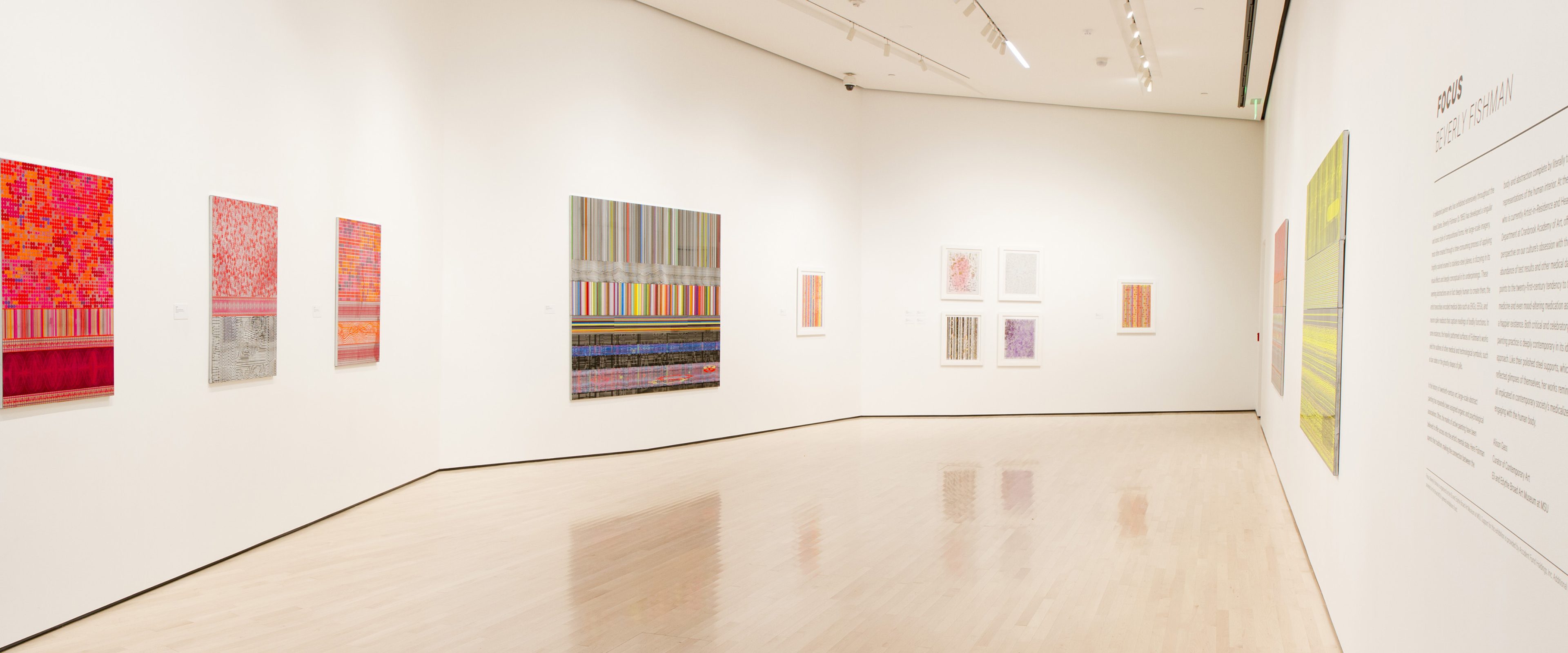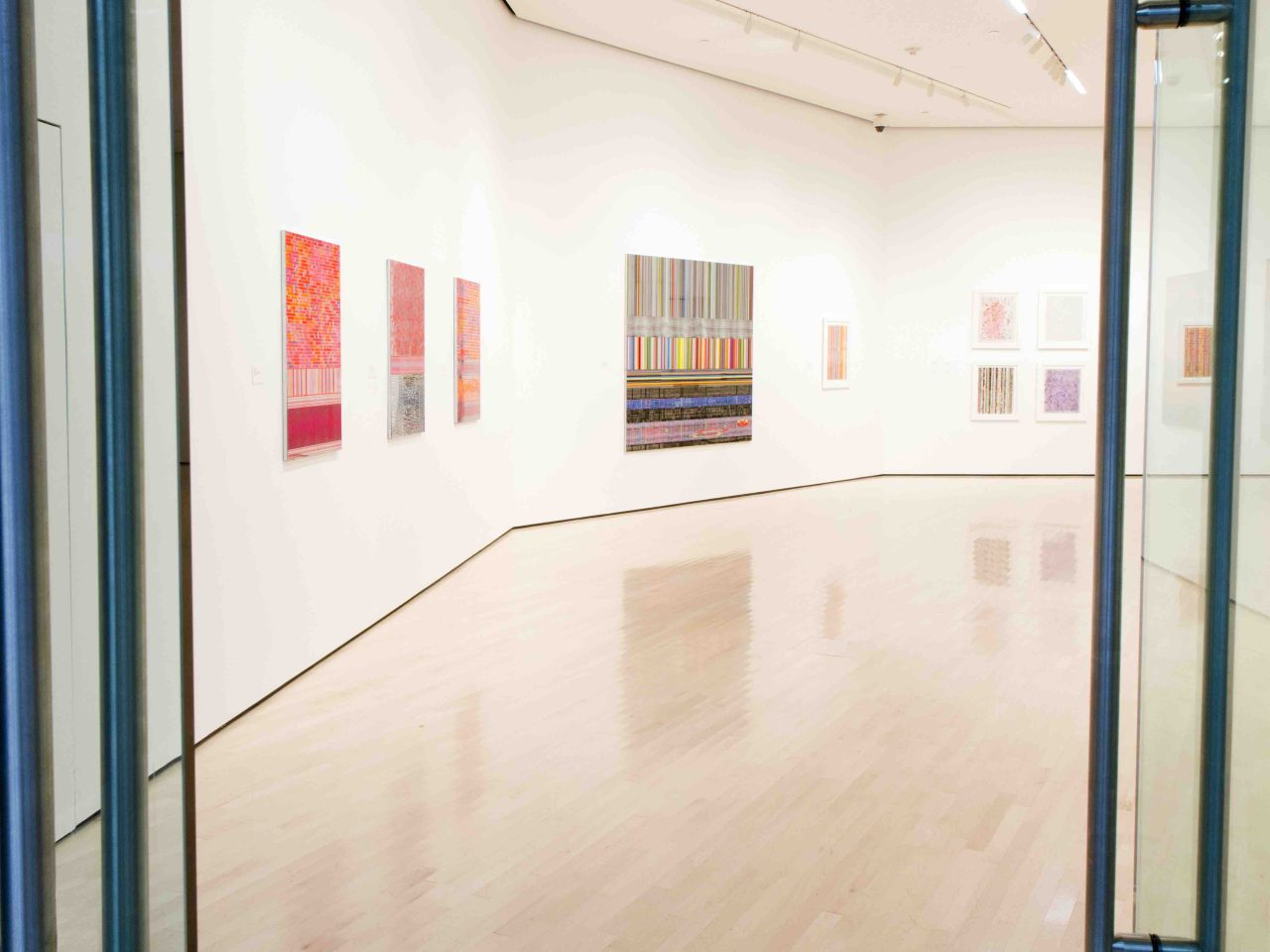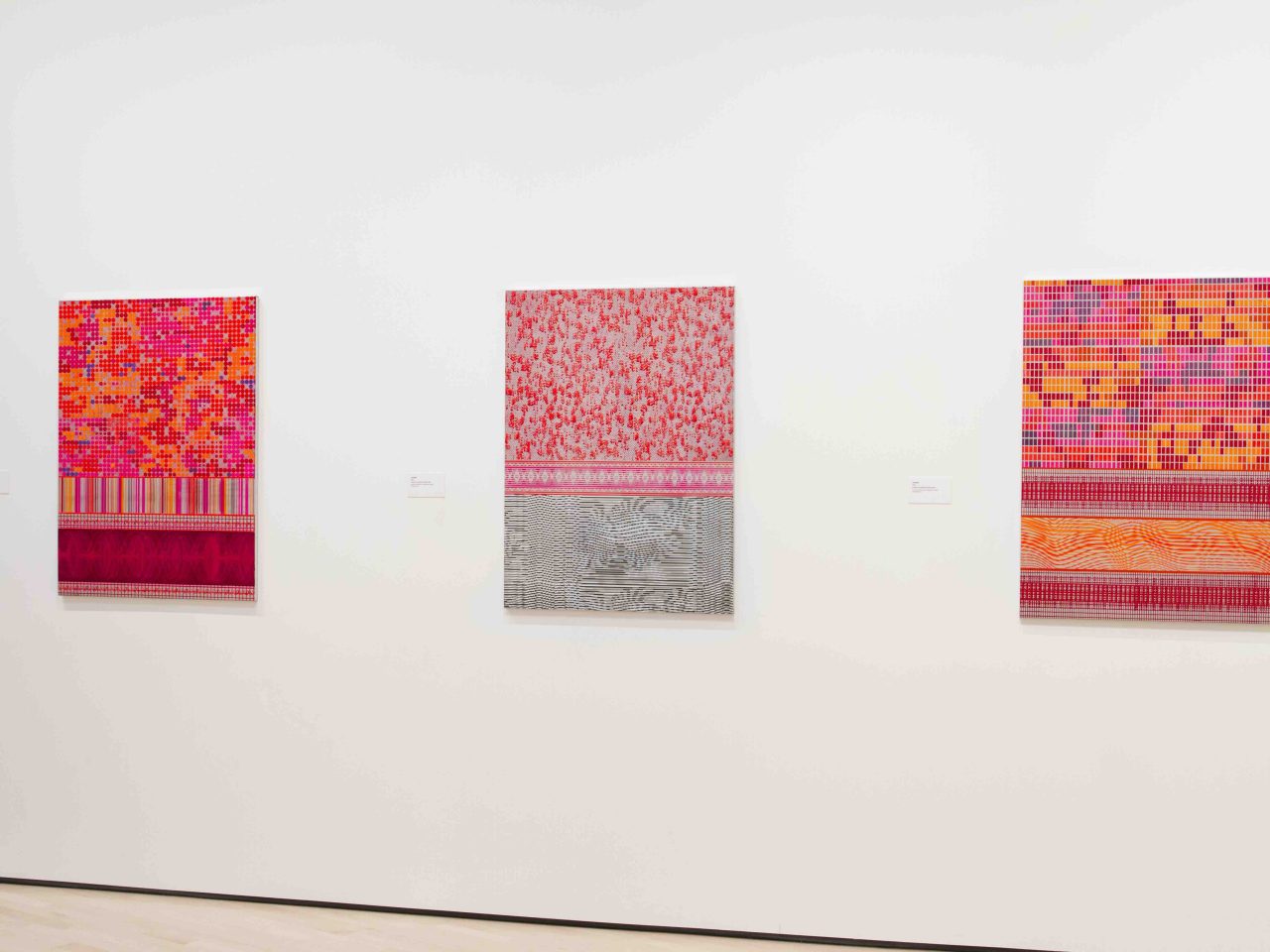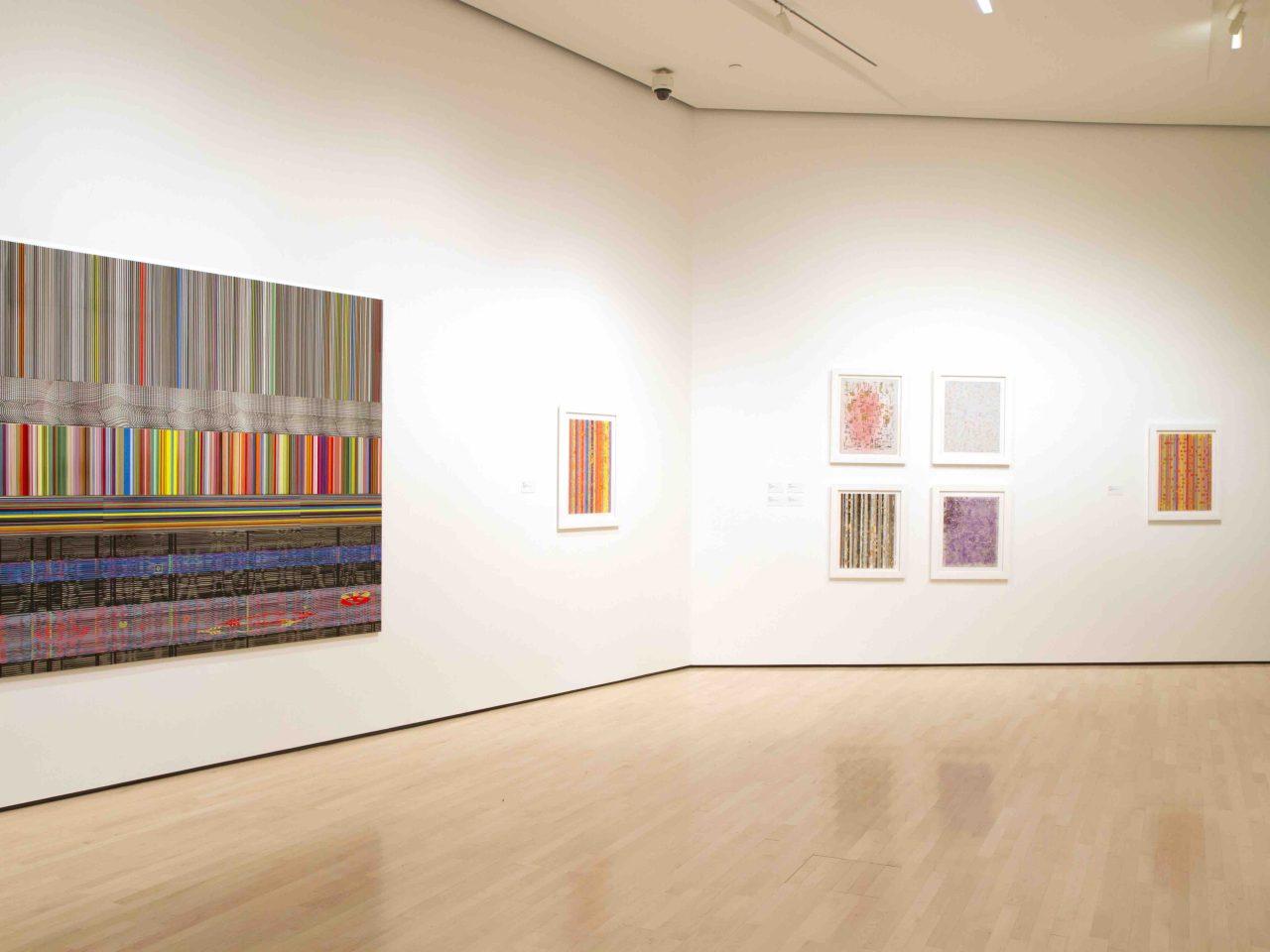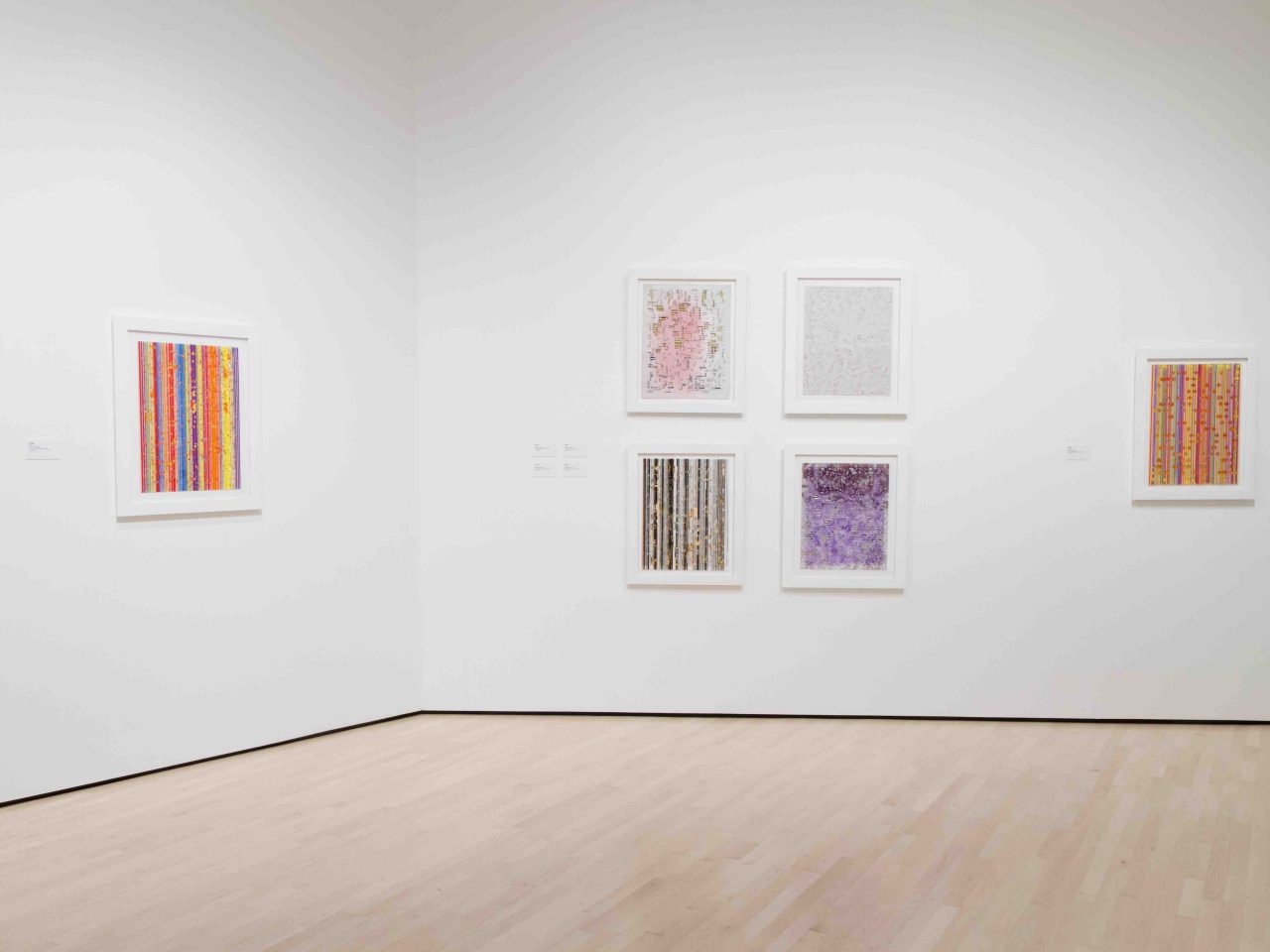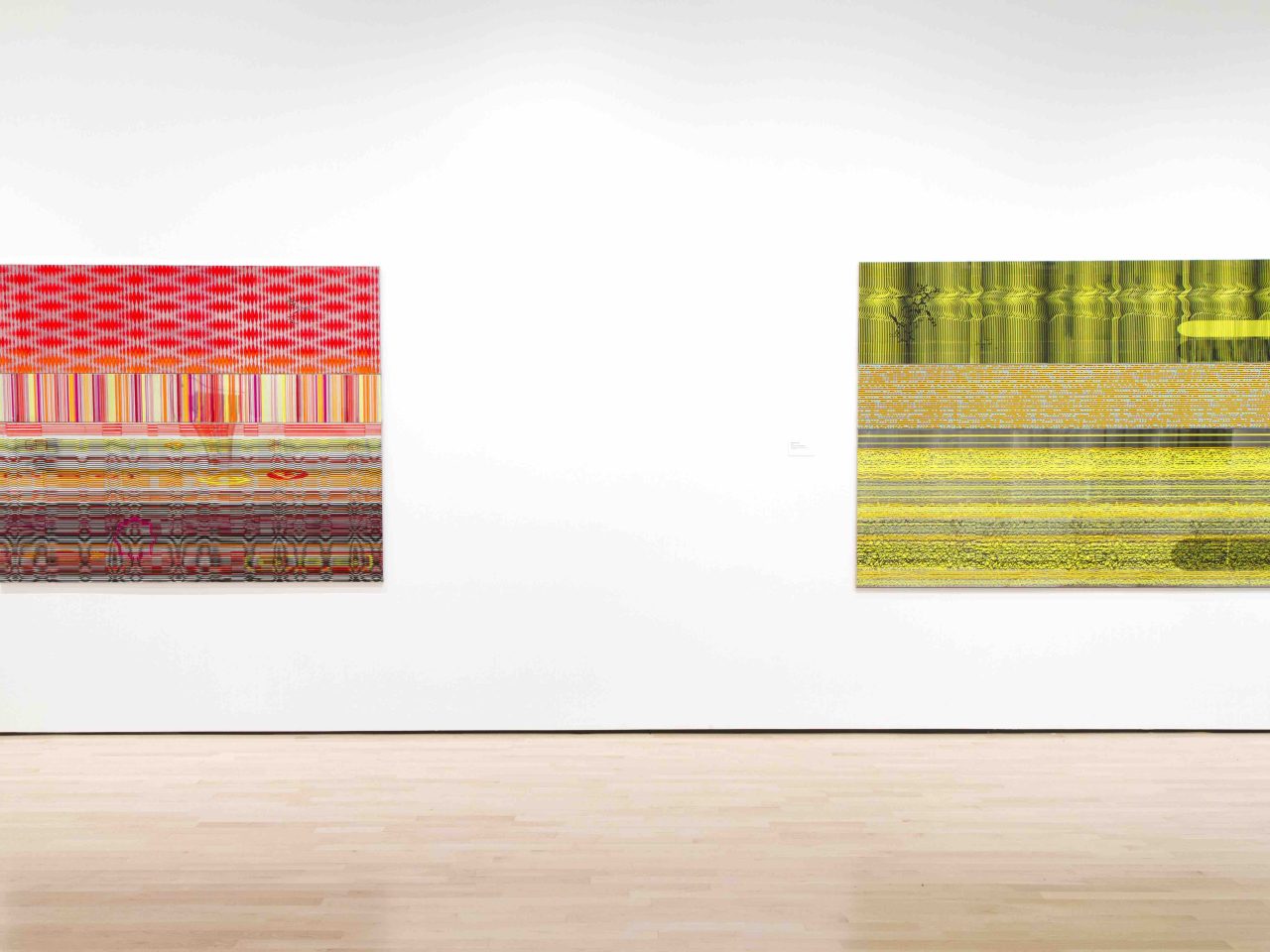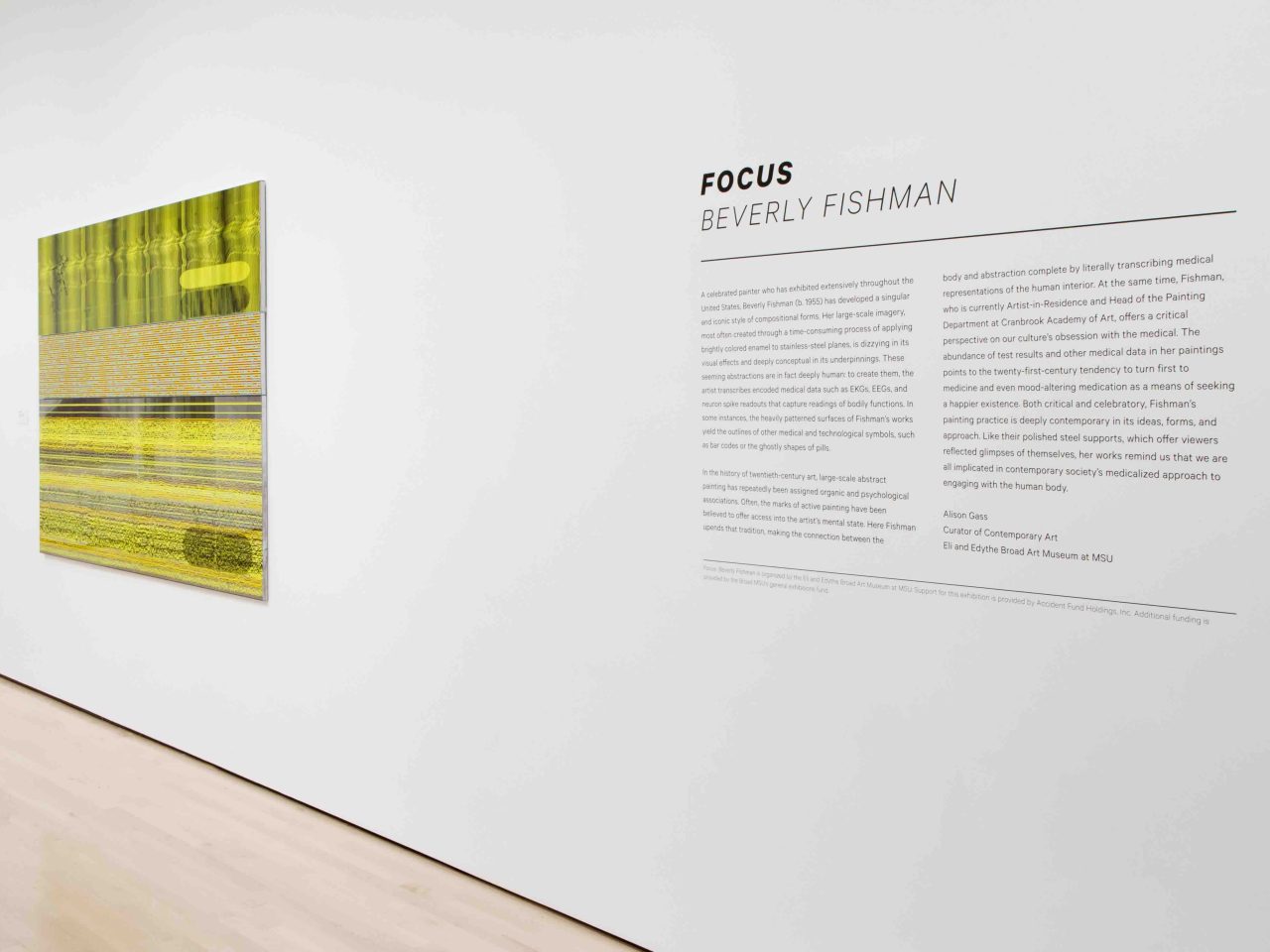Focus: Beverly Fishman is organized by the Eli and Edythe Broad Art Museum at Michigan State University and curated by Alison Gass, Curator of Contemporary Art. Support for this exhibition is provided by Accident Fund Holdings, Inc. Additional funding is provided by the MSU Broad’s general exhibitions fund.
About the Exhibition
Beverly Fishman is the Artist-in-Residence and Head of Painting at the Cranbrook Academy of Art in Bloomfield Hills, Michigan. A celebrated artist, who has exhibited extensively throughout the United States, she has developed a singular and iconic style of visual form in her painting practice. Her large scale images, most often created through a time consuming process of applying brightly colored enamel to stainless steel planes, are dizzying in their final effect and deeply conceptual in their underpinnings. These seeming abstractions are actually deeply human as the artist transcribes medical records that encode physical body functions. EKGs, EEGs, and neuron pike readouts are all featured prominently in the visual form. In instances bar code signs and the ghostly shapes of pills emerge slowly from the heavily patterned surface of the works into the viewer’s visual field.
In the history of 20th century art, large scale abstract painting is often thought to be organic and psychological, presenting both the marks of active painting and giving some suggested access into an artist’s mental state. Here, Fishman upends that tradition, literally following medical representations of the human interior to make the connection between abstraction and the body concrete. At the same time, Fishman offers a critical perspective on our current culture’s obsession with the medical, stringing together masses of scan readouts to point to the way humans in the 21st century often turn first to medicine and even mood-altering medication as a means of seeking a happier existence. Both critical and celebratory, Fishman’s work is deeply contemporary in its ideas, forms, and approach. As the use of the polished steel often offers viewers a reflected glimpse of themselves, she reminds us that we are all implicated in this 21st century approach to thinking about the human body.
